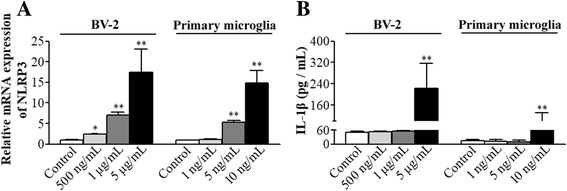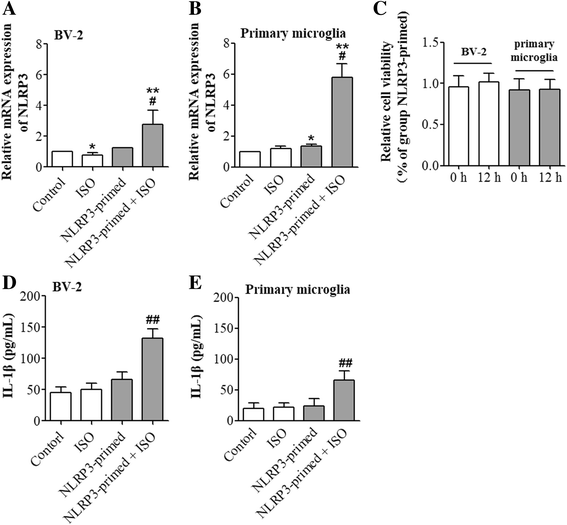Critical role of NLRP3-caspase-1 pathway in age-dependent isoflurane-induced microglial inflammatory response and cognitive impairment
- PMID: 29665808
- PMCID: PMC5904978
- DOI: 10.1186/s12974-018-1137-1
Critical role of NLRP3-caspase-1 pathway in age-dependent isoflurane-induced microglial inflammatory response and cognitive impairment
Abstract
Background: Elderly patients are more likely to suffer from postoperative cognitive dysfunction (POCD) after surgery and anesthesia. Except for declined organ function, the particular pathogenesis of POCD in elderly patients remains unknown. This study is carried out to determine the critical role of the NOD-like receptor protein 3 (NLRP3)-caspase-1 pathway in isoflurane-induced cognitive impairment.
Methods: Young (6-8 months old) and aged (14 months old) healthy male C57BL/6 mice were exposed to 1.5% isoflurane for 2 h. Some mice received intraperitoneal injection of Ac-YVAD-cmk (8 mg/kg), a specific inhibitor of caspase-1, 30 min before the isoflurane exposure. Morris water maze test was carried out 1 week after the isoflurane anesthesia. Brain tissues were harvested 24 h after the isoflurane anesthesia. Western blotting was carried out to detect the expression of NLRP3, interleukin (IL)-1β, and IL-18 in the hippocampus. Mouse microglial cell line BV-2 and primary microglial cultures were primed by lipopolysaccharide for 30 min before being exposed to isoflurane. NLRP3 was downregulated by RNA interference.
Results: Compared to young mice, aged mice had an increased expression of NLRP3 in the hippocampus. Isoflurane induced cognitive impairment and hippocampal inflammation in aged mice but not in young mice. These effects were attenuated by Ac-YVAD-cmk pretreatment (P < 0.05). Isoflurane activated NLRP3-caspase-1 pathway and increased the secretion of IL-18 and IL-1β in cells pretreated with lipopolysaccharide but not in cells without pretreatment. Downregulation of NLRP3 attenuated the activation of NLRP3 inflammasome by isoflurane.
Conclusions: NLRP3 priming status in aged mouse brain may be involved in isoflurane-induced hippocampal inflammation and cognitive impairment.
Keywords: Aging; Isoflurane; NOD-like receptor protein 3 inflammasome; Neuroinflammation; Postoperative cognitive dysfunction.
Conflict of interest statement
Ethics approval
All animal experiments were performed in accordance with current Chinese regulations and standards regarding the use of laboratory animals, and approved by the animal ethics committee of Sun Yat-Sen University.
Consent for publication
Not applicable.
Competing interests
The authors declare that they have no competing interests with the material presented in the paper.
Publisher’s Note
Springer Nature remains neutral with regard to jurisdictional claims in published maps and institutional affiliations.
Figures






References
MeSH terms
Substances
Grants and funding
LinkOut - more resources
Full Text Sources
Other Literature Sources
Medical
Research Materials
Miscellaneous

